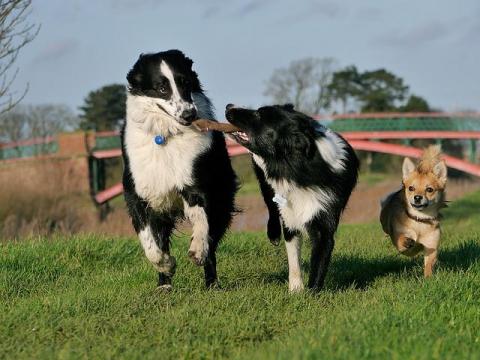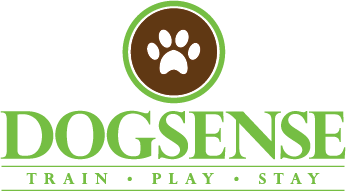
Interplay between dogs is a great way for your dog to develop a comfort level around other canines, and help him feel more at ease in different social situations involving humans and animals. Dog Sense, a leading provider of dog boarding and dog training classes in Lancaster, offers some handy tips for how to help your dog play well with others.
The Sooner the Better
Socialization training is most effective when a dog is 8 - 12 weeks old. This is the ideal time to begin exposing your pooch to the sights, sounds, and smells that comprise the world around him. Take your dog into town, go on a nature walk, explore your neighborhood - anywhere with lots to see and smell. Bring treats with you to help reinforce good behavior and create positive associations, especially as it pertains to your dog’s interaction with other dogs.
You can also bring your pup to a dog park, but we recommend not doing so until the dog is at least six months old. Also, confirm that your dog is current on his vaccinations before he interacts with other animals.
Breed Matters
Just as certain breeds may be especially suited for certain types of dog classes, so too are certain breeds more apt to constructive play with other dogs. Some dog breeds are more easygoing and accepting of other dogs, while other breeds are more aloof, and less tolerant. For example, “protective” breeds such as German Shepherds and Dobermans are terrific guard dog, but aren’t known for their affable personalities. Terriers, despite their small body size, are not known for being friendly towards other dogs.
However, no breed should ever be considered a “lost cause”, and that’s where dog obedience training can play a pivotal role in helping your four-legged companion learn how to comfortably and positively interact and play with other dogs, regardless of breed.
How Well Do You Know Your Dog?
Breed is important, but so too is your dog’s individual personality. If your dog is gregarious and friendly around you, your family, your friends, and even the postman, then chances are he’ll be a hit at the local dog part. However, if your dog is quiet, anxious, and overly aggressive, especially when out of his comfort zone, you might want to consider some classes at our dog training facility before introducing him to the rest of the dogs in your neighborhood.
Body Language
Humans exhibit various forms of body language, and dogs do too. The more time you spend with you dog, the better you’ll be able to differentiate playful/happy body language from body language that intimates anxiety and fear. When your dog is around other dogs, a bouncy gait and lots of wiggling/jumping around are a good sign. On the flipside, snarling, baring of teeth, and excessive mounting are signs that your dog isn’t ready for full interaction with other canines.
How Can Training and Obedience Classes Help?
Dog-to-dog interaction and etiquette are an integral part of the training and obedience classes at Dog Sense. Group training and group play constitute ideal learning environments in which your dog will learn how to interact with his “peers” in a positive way, stimulating his social development and minimizing anxiety. This teaching extends into quiet time, where your dog learns to enjoy the companionship of other dogs in a relaxed setting.
Whether you’re interested in puppy training, certification classes, or a behavioral consultation, our experienced dog trainers can help. Contact us today and let’s discuss your specific needs.
